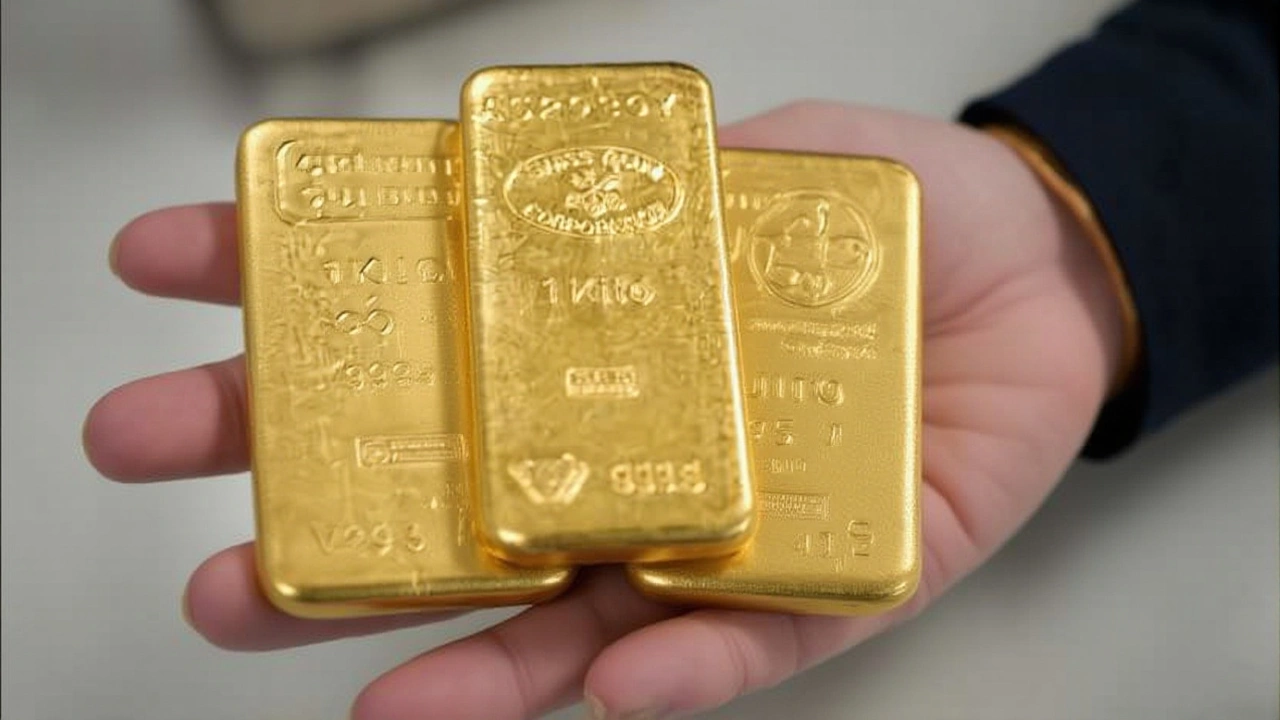
When gold price record surge broke the $4,000‑per‑ounce barrier on October 8, 2025, markets across the globe sat up straight. The spike, reported by ABC News (Australia) in a two‑minute video at 00:02:00 UTC, was driven by a rush of investors hunting safe‑haven assets amid lingering economic unease. The moment mattered because it signaled the first time the benchmark metal crossed that psychological line, a figure that had hovered just shy of $3,950 for months.
In Sydney, the Australian Securities Exchange saw the S&P/ASX 200 finish flat, while the Australian dollar slipped against the U.S. dollar and hit exactly 100.00 JPY per AUD. The coincidence of a record gold price and a steady local equity index sparked a cascade of commentary about whether gold’s safe‑haven aura will hold up as the metal climbs higher.
Why gold spiked now
Several forces converged on that Wednesday. First, the World Gold Council released a data point showing net inflows into gold‑focused exchange‑traded funds (ETFs) totaling 250 tons in September – the biggest single‑month surge in the past five years. Second, geopolitical jitters in Eastern Europe, coupled with a modest uptick in U.S. Treasury yields, nudged risk‑averse capital toward the metal.
By mid‑morning GMT, spot gold was trading at $3,985/oz, then vaulted over the $4,000 line in a frantic two‑minute window. The exact moment wasn’t disclosed, but traders on the London Metal Exchange confirmed a flurry of buy orders that pushed the price up 0.6 % in under five minutes.
- October 8, 2025 – spot gold > $4,000/oz
- September 2025 – gold ETF inflows +250 tons
- Australian dollar = 100.00 JPY per AUD
- S&P/ASX 200 – unchanged
Market reactions in Australia and beyond
Back in Sydney, the flat performance of the S&P/ASX 200 masked underlying sector shifts. Mining stocks rallied modestly, while financials slipped as the Aussie dollar weakened. The Reserve Bank of Australia’s governor, Philip Lowe, later said the central bank was “watching currency‑linked commodity movements closely, but no immediate policy changes are on the table.”
North of the equator, New York traders noted a 1.2 % rise in gold futures, while the U.S. dollar index dipped 0.4 % against a basket of peers. Analysts at Goldman Sachs flagged the move as a “classic flight‑to‑quality” response to heightened market volatility.
Expert views on the safe‑haven narrative
“We’ve never seen a clean break above $4,000 without an accompanying macro shock,” observed Emily Chen, senior analyst at Goldman Sachs. “The price is now testing a level that many investors considered ‘unrealistic.’ If the rally continues, we could see a re‑pricing of risk across the board.”
Conversely, Javier Morales, chief economist at the World Gold Council, reminded readers that gold’s buying power has historically outpaced inflation, especially when real yields turn negative. “The metal’s allure isn’t just about headlines; it’s about preserving value when other assets falter,” he said.

What the record means for investors
For the average investor, the $4,000 benchmark is both a milestone and a warning sign. On one hand, gold ETFs have outperformed most equity indices over the past six months, delivering an average return of 8.3 %. On the other, the price jump has squeezed the margin for new entrants – a $50 increase now costs roughly 1.25 % more of a typical retail portfolio.
Portfolio managers are rebalancing. A survey conducted by Morningstar on October 7 showed that 42 % of fund managers added gold exposure, while 35 % trimmed high‑yield bonds.
Retail investors should also watch the currency angle. The AUD’s move to 100.00 JPY per dollar suggests that a weaker Australian dollar could boost the domestic price of gold, making local mining stocks more attractive.
Looking ahead: price outlook and policy implications
Forecasts diverge. Some strategists at Morgan Stanley project gold could tip toward $4,250 by year‑end if geopolitical tensions persist. Others warn of a “price correction” if real yields rebound, which could pull the metal back below $3,900 within three to six months.
Regulators are also paying attention. The Australian Securities & Investments Commission (ASIC) hinted at tighter disclosure rules for retail investors buying gold through leveraged products, citing the need for “greater transparency amid heightened volatility.”
In short, the record is a milestone that will shape market sentiment for weeks, if not months. Whether gold retains its safe‑haven charm or becomes a cautionary tale of over‑optimism will depend on how quickly the broader economy stabilizes and whether central banks resist the urge to raise rates.
Frequently Asked Questions
Why did gold cross the $4,000 threshold on October 8, 2025?
A surge in safe‑haven demand, massive inflows into gold ETFs, and rising geopolitical uncertainty pushed spot gold above $4,000 per ounce within a narrow trading window, according to data from the World Gold Council and market activity on the London Metal Exchange.
How did the Australian dollar’s movement affect the gold market?
The AUD slipped against the U.S. dollar and reached exactly 100.00 JPY per AUD, making imported gold slightly cheaper in local currency terms. This, combined with a flat S&P/ASX 200, encouraged Australian investors to look at gold as a hedge against currency depreciation.
What are analysts saying about gold’s future price?
Opinions split: some Morgan Stanley strategists see the metal climbing to $4,250 by year‑end if risk‑off sentiment persists, while others warn of a correction back below $3,900 should real yields rise, a scenario highlighted by senior analysts at Goldman Sachs.
Which investors are most likely to benefit from the record high?
Institutional investors holding gold ETFs have enjoyed an 8.3 % return over the past six months, and mining companies listed on the ASX could see higher earnings if the local currency remains weak. Retail investors, however, should be cautious of higher entry costs.
Will regulators change rules because of the price jump?
Australia’s ASIC signaled a review of disclosure requirements for leveraged gold products, aiming to ensure investors understand the heightened volatility that accompanies record‑high price levels.